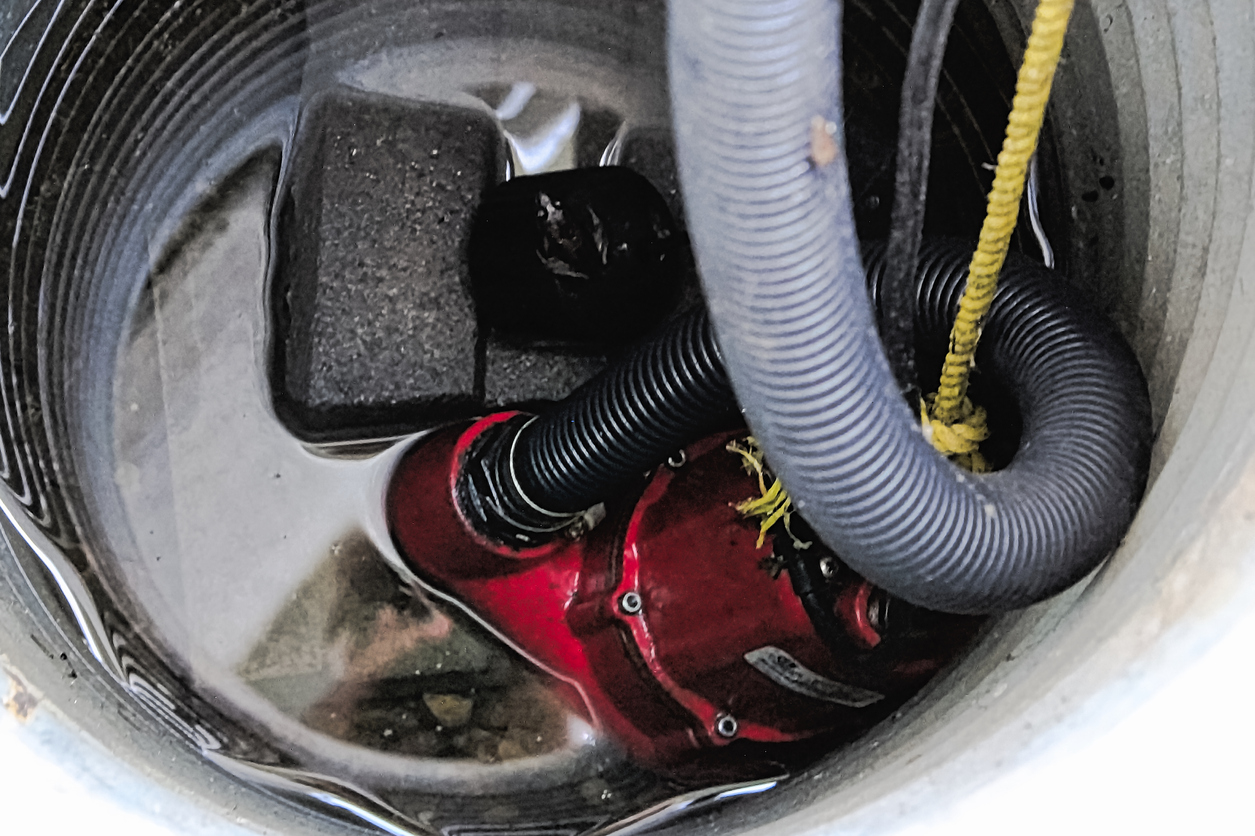
A float switch is a small device designed to detect water levels and activate the sump pump when a certain threshold is hit. As water gathers in the sump pit, the float switch floats at the surface. When the water level rises, the switch is lifted, triggering the sump pump to start pumping water away from your basement to prevent potential flooding.
Therefore, as you can guess, a malfunctioning float switch poses a severe threat to the efficiency of your home’s sump pump. Without being able to reliably detect and activate the sump pump, the equipment can fail, leaving your basement exposed to flooding and other water-related damage. To learn more about sump pump float switches, keep reading.
Sump Pump Switch Types
Float switches are vital parts of sump pump systems, given that they sense the water level and turn on the pump when it’s required. There are three types of float switches available: tethered, vertical, and electronic. Each type comes with its own set of advantages. Let’s take a closer look at each below:
Vertical Float Switches
· Compact design and versatility: These are made to hang in the sump pump pit vertically to save space. They provide adaptability in restricted spaces where a tethered switch could be difficult to use.
· Free movement: Unlike tethered switches, this switch moves freely with rising water, acting as a dependable signal for the pump, which lowers the possibility of tangling.
Tethered Float Switches
· Classic design: These feature a floating ball that is attached directly to the pump by a cord. As water levels increase, the ball lifts, triggering the sump pump to activate.
· Cost-effective: Tethered float switches are often more budget-friendly compared to other options available, given they have a simple design that contributes to ease of installation and ongoing maintenance.
· Drawbacks: The tethered design may have limitations in movement, affecting how it responds to water level changes. There is also a possibility for entanglement issues if not properly installed and maintained.
Electronic Float Switches
· Sensor Technology: Electronic switches use advanced sensors to detect water levels.
· Precision and Reliability: They are known for their precise and reliable operation due to electronic sensing. These reduce the likelihood of wear and tear associated with mechanical parts.
· Durability: Electronic float switches are often more durable and have a longer lifespan. They are suitable for those seeking a low-maintenance solution with minimal mechanical components.
· Higher Cost: That said, electronic float switches may be costlier than their mechanical counterparts. However, the long-term reliability and reduced maintenance costs can justify the initial investment.
Choosing what type of float switch is right for you depends on what you’re looking for as a homeowner. Therefore, we suggest working with a professional plumber who can help you narrow down which device and sump pump would suit your home.
Signs of a Malfunctioning Float Switch
Knowing when your sump pump float switch is malfunctioning is key to resolving the problem quickly and avoiding possible damage to your system and home. Here are some warning signs to pay attention to:
· Recurrent on/off cycling: The pump may cycle on and off more often than necessary if the float switch is not responding appropriately to water levels.
· Noisy operation: Abnormal noises made by the sump pump, including grinding or clicking sounds, could be a sign that the float switch isn’t working properly.
· Failure to turn on: The sump pump not turning on when it should be is the most evident sign of a malfunctioning float switch.
· Continuous operation: On the other hand, continual operation may occur from a float switch that is unable to cause the pump to shut off. In addition to wasting energy, this continuous running raises the possibility of the pump failing or overheating.
· The switch is jammed or stuck: Check the float switch physically to make sure it slides freely. Insufficient pumping may result from a blocked or jammed float switch that is unable to react to rising water levels.
· Visible debris or damage: Inspect the float switch for any obvious flaws, like cracks. Likewise, debris in the sump pit may impede the movement of the float switch, impairing its ability to operate as intended.
To avoid malfunctions, the float switch must be regularly inspected and maintained by a professional plumber at least once a year, especially during periods of prolonged rainfall. At the same time, when you take quick action to address these warning signs, your sump pump system will continue to function dependably and effectively shield your house from further water damage. As such, always check on the current state of your sump pump to ensure optimal performance.
In Need of a Sump Pump Repair? Call Knight Plumbing Today!
Do you need a sump pump repair and believe it has something to do with your float switch? If so, look no further than the professional plumbing team from Knight Plumbing.
We know that sump pump problems can happen at any time, which is why our qualified plumbers are available for repairs and maintenance 24/7/365 days a year, including after-hours, weekends, and holidays, at no extra cost. We can also accommodate same-day repairs in emergency cases!
Knight Plumbing is your first defence against water-related damage. No job is too complex or large, given our years of experience and group of industry-leading employees. If you’re a homeowner living in Calgary, Cochrane, Langdon, Okotoks, Bragg Creek, Willow Park, Airdrie, Chestermere, DeWinton, or Deer Ridge, please do not hesitate to reach out to us at any time to schedule your sump pump repair appointment.
You can reach us over the phone or use our online booking form to reserve your appointment right away. We look forward to partnering with you!


